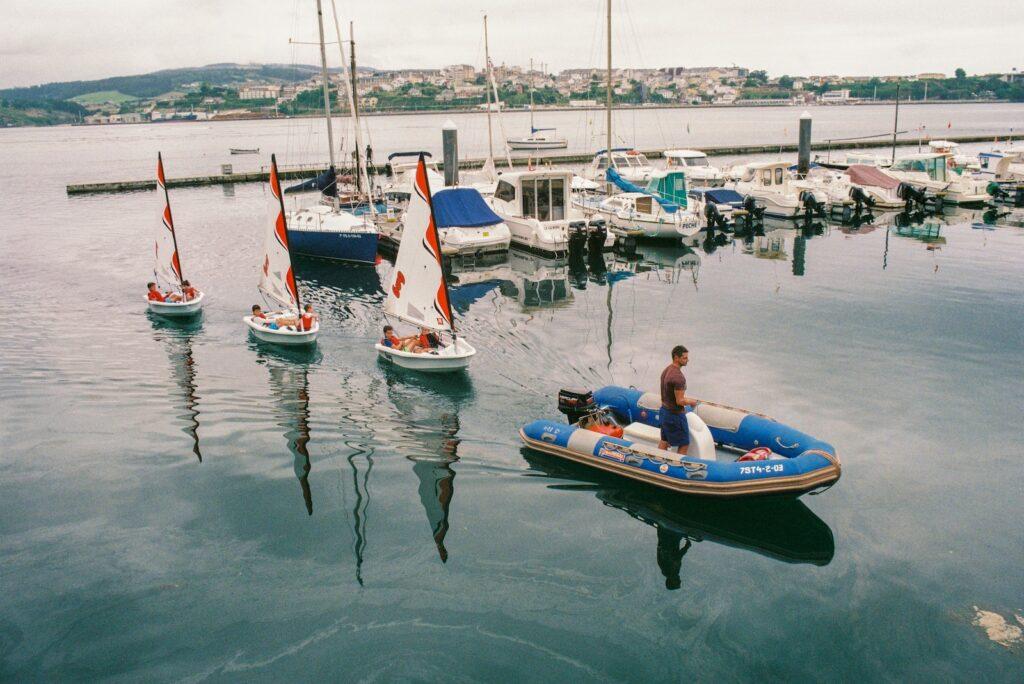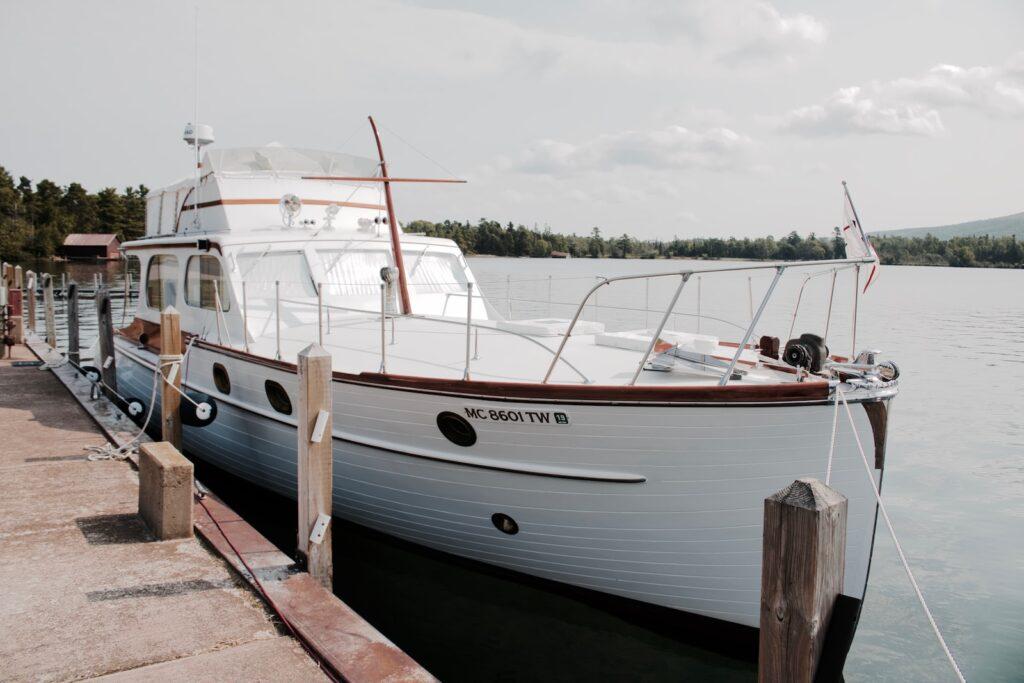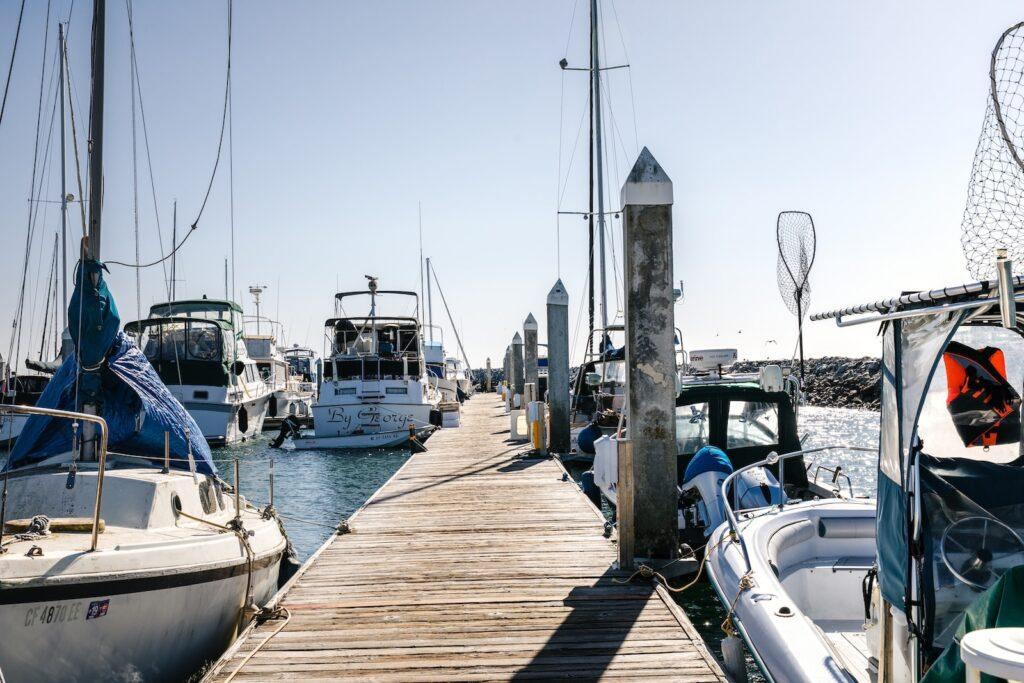What Should You Check to Decide if a Speed is Safe for Your Boat?
When operating a boat, ensuring the safety of yourself, your passengers, and other watercraft is of utmost importance. One key aspect of boating safety is determining a safe speed for your boat. Understanding the factors that influence safe speed is crucial in avoiding accidents, maintaining control, and navigating waterways responsibly.
What should you check to decide if a speed is safe for your boat? We will explore the essential factors to consider when determining the safe speed for your boat. By examining various elements such as boat design, weather conditions, waterway regulations, and visibility, you can make informed decisions and adjust your speed accordingly.
Key Takeaways:
- Safe Boating Speed: Various factors should be considered to determine a safe speed for your boat. These include the manufacturer’s guidelines, boat condition, weather and water conditions, operator experience, passenger safety, and navigational conditions. Ensure you adjust your speed according to these factors to maintain control and safety.
- Situations for Reduced Speed: Boat operators should reduce speed in situations such as navigating through congested areas, during poor visibility, in rough water conditions, when maneuvering through narrow spaces, approaching shorelines, or complying with local regulations. This precaution ensures safety and adheres to boating regulations.
- Understanding Boat Types, Conditions, and Safety Regulations: Your boat type and its designed capabilities, along with water and weather conditions, significantly impact your safe speed. It’s crucial to know and follow local boat safety regulations, which may have specific speed limits and restrictions. In addition, maintaining your boat and its components in good working condition and ensuring availability of safety gear is essential for safe operations.

What Should You Check to Decide if a Speed is Safe for Your Boat
When determining what should you check to decide if a speed is safe for your boat, there are several key factors that you should check and consider. These factors will help you assess whether your boat is capable of handling the desired speed safely.
Here are some important things to check:
- Manufacturer’s Recommendations: Consult your boat’s manual or contact the manufacturer to determine the recommended maximum speed for your specific boat model. Following the manufacturer’s guidelines is crucial to ensure the boat’s safe operation and to avoid exceeding its design limitations.
- Boat Condition: Assess the overall condition of your boat, including its hull, engine, steering, and other components. Look for any signs of damage, wear, or mechanical issues that could affect its performance and safety at higher speeds. Ensure that all systems are in proper working order before attempting higher speeds.
- Weather and Water Conditions: Consider the current weather and water conditions, as they greatly impact safe boat operation. High winds, rough seas, strong currents, or limited visibility can all affect the safety of higher speeds. Adjust your speed accordingly to maintain control and stability in changing conditions.
- Operator Experience and Skill: Evaluate your own experience and skill level as a boat operator. Operating a boat at high speeds requires knowledge, experience, and proficiency in handling the boat’s controls, maneuvering, and responding to different situations. Make sure you are comfortable and confident in your abilities to handle the boat safely at higher speeds.
- Passenger Safety: Consider the safety of passengers on board. Ensure that everyone is wearing appropriate personal flotation devices (PFDs) and is seated securely. Higher speeds can increase the risk of accidents or injuries, so it’s important to prioritize passenger safety.
- Navigation and Obstacles: Assess the navigational conditions and presence of any potential obstacles such as rocks, shallow areas, submerged objects, or other vessels. Higher speeds reduce reaction time, so it’s crucial to have clear visibility and a safe route to navigate.
By thoroughly checking these factors and making informed decisions, you can determine if a speed is safe for your boat. Always prioritize safety, follow boating regulations, and use good judgment to ensure a secure and enjoyable boating experience.

When Should Boat Operators Reduce Speed?
Boat operators should reduce speed in various situations to ensure safety and comply with boating regulations.
Here are some instances when it is important to reduce speed:
- Restricted or Congested Areas: Reduce speed when navigating through restricted or congested areas, such as marinas, harbors, docks, or areas with heavy boat traffic. Slowing down allows for better maneuverability, reduces the risk of collisions, and respects the safety of other boaters, swimmers, and waterfront structures.
- Poor Visibility: When visibility is limited due to fog, heavy rain, or darkness, it is crucial to reduce speed. Reduced visibility impairs your ability to detect obstacles, other vessels, or hazards in the water, increasing the risk of accidents. Slowing down allows more time to react to unexpected situations and enhances overall safety.
- Rough Water Conditions: In rough water conditions, such as strong waves, choppy seas, or high winds, it is advisable to reduce speed. Operating at a slower speed helps maintain control of the boat, prevents excessive pounding or swaying, and minimizes the risk of capsizing or losing control.
- Narrow Channels or Confined Spaces: When navigating through narrow channels, tight turns, or confined spaces, it is essential to reduce speed. Doing so allows for better control, maneuverability, and reduces the chance of collisions with other boats, buoys, or underwater hazards.
- Approach to Shorelines or Swimmers: Reduce speed when approaching shorelines, swimming areas, or zones designated for human-powered watercraft. Slow speeds prevent excessive wakes, minimize the risk of injury to swimmers, and show respect for the safety and tranquility of others in the vicinity.
- Compliance with Local Regulations: Familiarize yourself with local speed limits and regulations specific to the waterways you are navigating. Different areas may have specific speed restrictions, especially in sensitive environmental areas, wildlife habitats, or no-wake zones. Adhering to these regulations promotes safety and protects the environment.
TIP: Remember, operating at a safe speed is critical to ensuring the well-being of all onboard, other boaters, and the overall enjoyment of the boating experience.
Understand the Types of Boats
The type of boat you own will determine what speeds are safe for you. Different types of boats are designed to handle different types of speeds, and it is important to be aware of the capabilities of your boat. Some types of boats that are commonly used for recreational activities include:
Powerboats
Powerboats are designed for speed and are typically used for activities such as skiing, wakeboarding, and tubing. These boats are usually equipped with powerful engines and are capable of reaching high speeds. However, it is important to be aware of the potential risks that come with high speeds, such as collisions with other boats or objects.
Sailboats
Sailboats are designed for sailing and cruising. These boats typically have slower speeds than powerboats and are not designed for high speeds. It is important to be aware of the conditions of the water and the wind when sailing to ensure that the boat is not going too fast.
Pontoon Boats
Pontoon boats are designed for cruising and leisure. These boats are not typically designed for high speeds and are better suited for touring and leisurely activities.
Consider the Conditions
When deciding what should you check to decide if a speed is safe for your boat, it is important to consider the current conditions of the water. The conditions of the water can vary depending on the time of day, the weather, and the location. It is important to be aware of the conditions of the water before operating your boat.
Time of Day
The time of day can impact the conditions of the water. During the day, the water can be choppy and the wind can be strong, making it difficult to maneuver the boat. At night, the water can be calmer and the wind can be less strong.
Weather
The weather can also impact the safety of the water. In stormy weather, the water can be rough and the wind can be strong, making it difficult to control the boat. In sunny weather, the water can be calmer and the wind can be less strong.
Location
The location of the boat can also impact the conditions of the water. In areas with a lot of boat traffic, the water can be choppy and the wind can be strong. In remote areas with little boat traffic, the water can be calmer and the wind can be weaker.
Understand Boat Safety Regulations
It is important to understand the boat safety regulations in your area before operating your boat. Different states and countries have different regulations for boat speed, so it is important to research the regulations in your area. Most areas have a maximum horsepower for boats, so it is important to adhere to the regulations.
Speed Limits
Most areas have a maximum speed limit for boats. It is important to be aware of the speed limit in your area and adhere to it. Exceeding the speed limit can result in a fine or other penalties.
Wake Zones
Some areas also have designated wake zones, which are areas where boats must reduce their speed to reduce the amount of wake they create. It is important to be aware of the wake zones in your area and adhere to the speed regulations.
No Wake Zones
There are also areas known as “no wake” zones, where boats must operate at idle speed. These areas are typically in shallow water and near sensitive areas, such as swimming areas or marinas. It is important to be aware of the no wake zones in your area and operate your boat at idle speed.

Examine the Boat
Before operating your boat, it is important to examine it to ensure that it is in good working condition. Make sure to check the engine, the hull, and the propeller to ensure that they are in good condition. If any of these components are damaged, they can impact the safety of the boat and the speed at which it can safely travel.
Engine
Make sure to check the engine of the boat to ensure that it is in good condition. The engine should be properly maintained and the oil should be changed regularly. Make sure to check the fuel lines and fuel filter to ensure that they are in good condition.
Hull
Check the hull of the boat to make sure it is in good condition. Make sure there are no cracks or damage to the hull that could impact the safety of the boat.
Propeller
Check the propeller of the boat to make sure it is in good condition. Make sure the propeller is properly maintained and the blades are in good condition. If the blades are damaged, it can reduce the speed of the boat and impact its maneuverability.
Know Your Abilities
Knowing your abilities and making an informed decision about a safe speed for your boat is crucial for a safe and enjoyable boating experience. Here are some factors to consider:
- Boat Handling Skills: Assess your level of boat handling skills and experience. Familiarize yourself with the specific characteristics and limitations of your boat, including its size, weight, and maneuverability. Understanding how your boat responds to different speeds and conditions is essential in determining a safe speed.
- Water Conditions: Take into account the current water conditions, such as waves, tides, currents, and wind. Adverse conditions can significantly impact the stability and control of your boat, requiring a slower and safer speed to navigate effectively.
- Visibility: Consider the visibility on the water, including any obstacles, navigational aids, or other vessels. Reduced visibility due to fog, rain, or low light conditions may necessitate a slower speed to maintain a safe distance from potential hazards.
- Passenger Safety: Ensure the safety and comfort of your passengers. Higher speeds can create more intense vibrations, increased wind resistance, and a potentially rougher ride. Consider the capabilities and comfort levels of your passengers when determining a safe speed.
- Legal Requirements: Familiarize yourself with local boating regulations, speed limits, and any specific restrictions in your area. Adhering to these regulations is not only a legal requirement but also promotes safe boating practices.
- Risk Assessment: Conduct a risk assessment by evaluating the overall boating environment and potential hazards. Assess factors such as boat traffic, proximity to shore, underwater obstructions, and the presence of swimmers or other water recreational activities. Adjust your speed accordingly to mitigate risks and maintain a safe distance from potential dangers.
It is important to know your own abilities when operating a boat. If you are not experienced in operating a boat, it is important to be aware of the potential risks and to operate the boat at a safe speed. If you are an experienced boater, it is important to be aware of the conditions of the water and the boat and to adjust the speed accordingly.
Experience Level
If you are a beginner, it is important to be aware of the potential risks associated with operating a boat. It is also important to be aware of the regulations in your area and to operate the boat at a safe speed.
Conditions of the Water
It is important to be aware of the conditions of the water when operating a boat. It is important to consider the time of day, the weather, and the location when determining the safe speed for your boat.
Capabilities of the Boat
It is important to be aware of the capabilities of your boat when determining the safe speed. Different types of boats are designed for different types of speeds, so it is important to be aware of the capabilities of your boat.
Safety Gear
When operating a boat, it is essential to have the proper safety gear. This includes life jackets, fire extinguishers, flares, and other safety equipment. It is important to make sure that the safety equipment is in good condition and that it is readily available when needed.
Life Jackets
Life jackets are essential for the safety of all passengers on the boat. Make sure to have the appropriate number of life jackets for the number of passengers on the boat and make sure that they are in good condition and fit properly.
Fire Extinguishers
Fire extinguishers are essential for the safety of the boat. Make sure to have the appropriate number of fire extinguishers for the size of the boat and make sure that they are in good condition.
Flares
Flares are essential for signaling for help in the event of an emergency. Make sure to have the appropriate number of flares for the size of the boat and make sure that they are in good condition.
FAQs
How do I assess the water conditions to determine a safe speed for my boat?
To assess water conditions, consider factors such as wave height, wind speed and direction, tidal currents, and waterway obstructions. These elements can significantly impact your boat’s stability and control. Evaluate the current conditions and use your judgment to determine a safe speed that allows you to navigate comfortably and safely.
What role does visibility play in determining a safe speed for my boat?
Visibility is crucial for safe boating. Factors such as fog, rain, or low light conditions can limit your ability to see potential hazards or other vessels. When visibility is reduced, it’s important to reduce your speed accordingly to maintain a safe distance from obstacles and maintain control of your boat.
How does passenger safety factor into deciding a safe speed for my boat?
Consider the comfort and safety of your passengers when determining a safe speed. Higher speeds can lead to increased vibrations, stronger wind resistance, and potentially rougher rides.
Conclusion
When deciding what speed is safe for your boat, it is important to consider the type of boat, the conditions of the water, the boat safety regulations, the condition of the boat, and your own abilities. Knowing what to look for when determining the safe speed for your boat is essential for having a safe and enjoyable boating experience.
